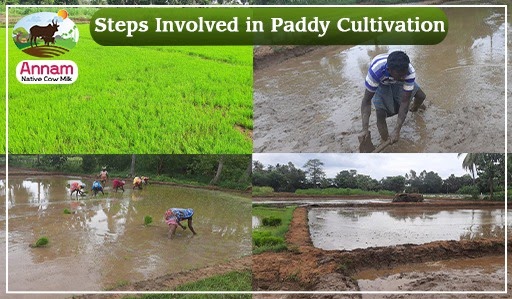Since rice is the staple food of Southern India, we at Annam Farms, cater to this widespread demand of the people through our organic paddy crops grown on our own farms. Our dedicated staff prepares the land so that it enables a good harvest at the end. So, what are the steps involved in Paddy cultivation? Let us see all about it in the coming sections of this blog post.
1 - Preparing the land
Farmers get to work on the fields and will try to finish all the preparations before the rainy season. First, they begin to pull out the weeds so that the main crop would receive all the nutrition from the soil. Once this is done, the field is tilled by buffaloes to a certain inch. We then add natural manure to the land to improve the fertility of the soil. Finally, the land is covered with water for about 2 - 2.5 cm before the seedlings are sown.
2 - Transplanting the paddy seedlings
Usually, the seedlings are first grown in a nursery and then transferred to the fields after forty days. In some regions, it is directly sown in the fields. However, the yield from transplanting is significantly higher than that of direct sowing.
3 - Maintenance of the field
Paddy requires utmost attention and regular maintenance. The crop needs to be spaced out so that they derive equal nutrition from the soil. Our farmers will also regulate the water level in the soil depending on the growth of the crop.
4 - Harvesting
Harvesting is done during the dry season. The farmers use the traditional curved knife and this process is very labor-intensive. Once this process is finished, our farmers will finally separate the rice grains from the husk through threshing, milling, and winnowing.
Annam Milk is a reputed milk company in Chennai that also supplies fresh organic produce harvested on our farms.




